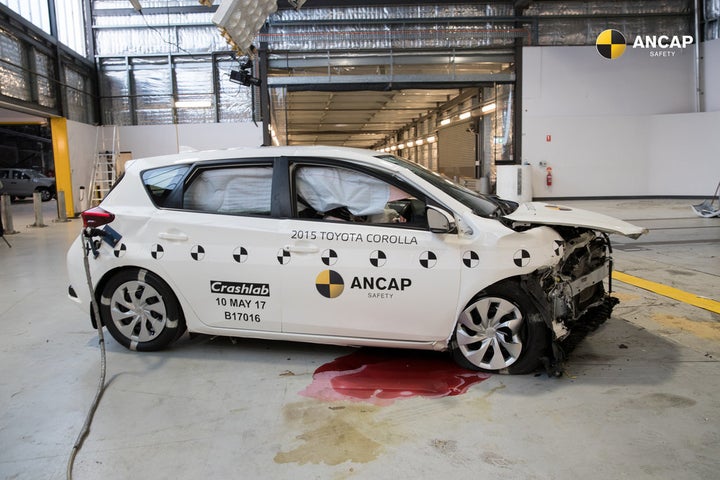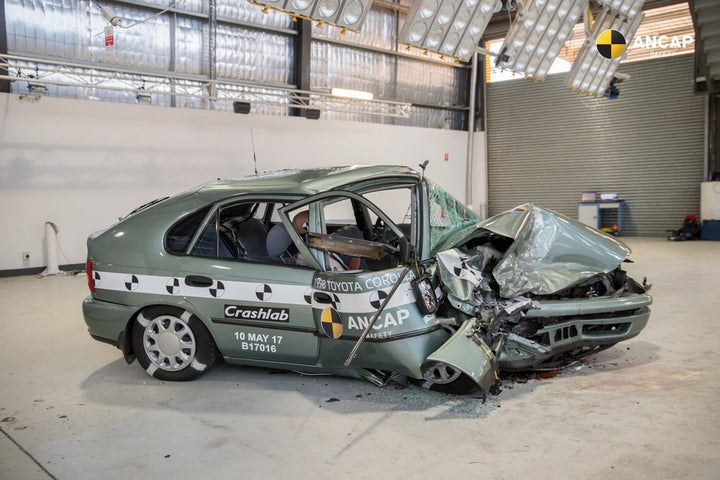Cars are getting safer, that’s a fact.
To see just how much safer they are though Australia and New Zealand’s car safety advocate created a shocking test that demonstrates just how far cars have come from before turn of the millennium.
In the test, ANCAP decided to test a head-on collision between a 1998 Toyota Corolla and a 2015 Toyota Corolla.
The collision took place with both cars travelling at 64 km/h and was filmed in slow-motion.
The results are shocking to say the least.
Aside from demonstrating the incredible progress car manufacturers have made, the test was also designed to highlight a particular issue facing the world.
ANCAP reports that while older vehicles (cars made before 2000) account for just 20% of the cars on the road in Australia, they are involved in 33% of accidents.
“It is concerning the rate of fatal crashes is four times higher for older vehicles than for new vehicles.” said ANCAP Chief Executive Officer, James Goodwin.
“We’ve been tracking the average age of a vehicle involved in a fatal crash, and in just one year we’ve seen that average increase from 12.5 years to 12.9 years. This highlights the need for a renewed national focus and greater support for safer vehicles,”
While the crash itself is shocking to watch, seeing the aftermath of both cars is as stark an indicator of how different both cars are.

The 2015 Corolla model received a five star rating of 12.93 out of a possible 16 with the car’s structural integrity seemingly remaining completely intact.
The 1998 model however suffered “catastrophic structural failure” with the dummy being at extremely high risk of a serious head injury.
It should come as no surprise then that the 1998 Corolla received a safety rating of zero, or 0.43 out of a possible 16.

Mr Goodwin concluded saying: “Safety is not a luxury and we want everyone to remain safe on the road, so consumers should look for the safest car they can afford and the safest car that suits their needs.”
“The outcomes of this test are stark and the automotive, finance and insurance industries can play a part to assist in encouraging people into newer, safer cars.”